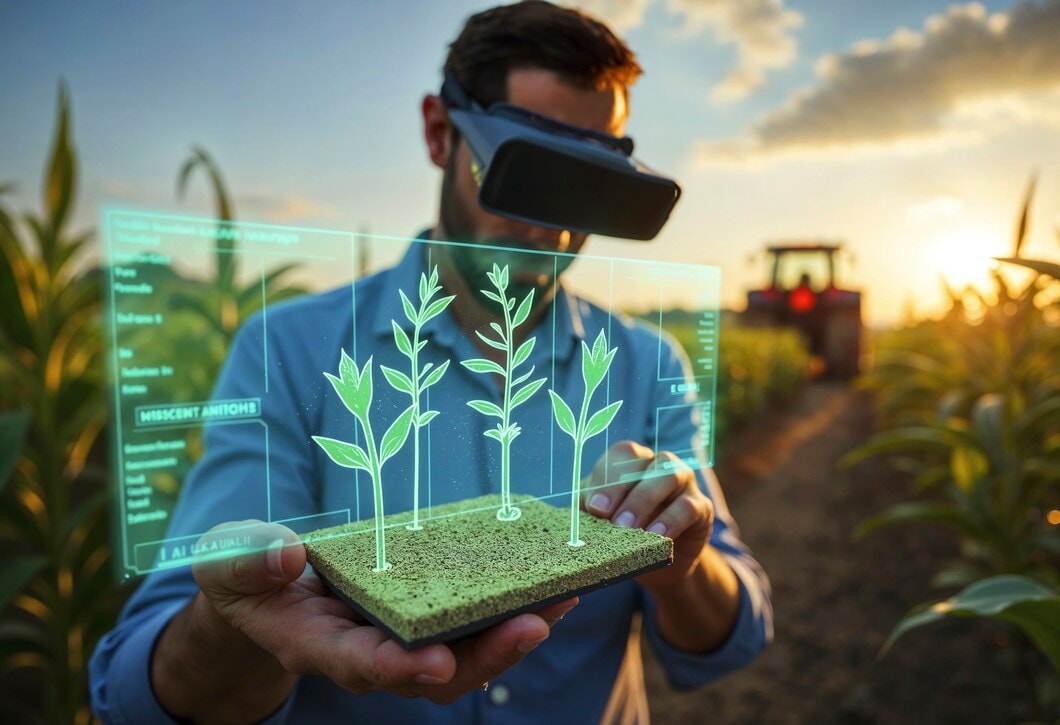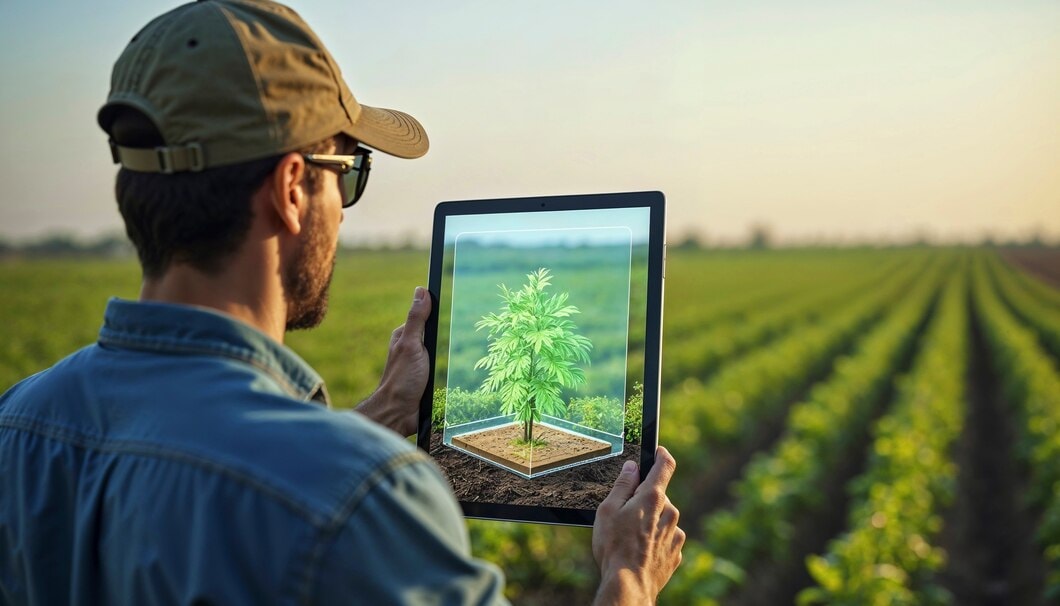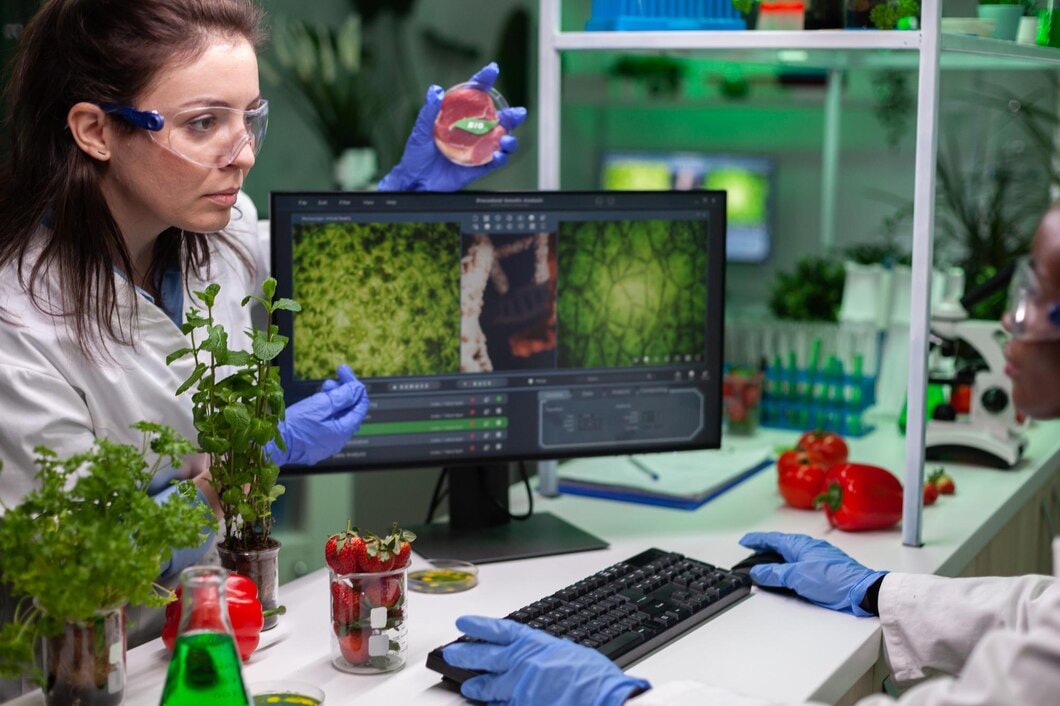Introduction
Agriculture is the backbone of human civilization and is witnessing a deep transformation.
The global population is expected to rise to more than 9 billion by 2050, thus making food security a challenge of paramount importance. Traditional farming techniques are no longer sufficient to fulfill the increasing needs of the agricultural sector.
It is in this context that computer vision agriculture—powered by AI and ML—is an innovative approach. This technology is transforming farming systems, increasing crop yield, enhancing food production, and reducing environmental impacts.

Emergence of AI in Agriculture
AI technology has brought revolutionary changes to modern agriculture. From crop health analysis to livestock farming, AI-driven tools have helped farmers adopt smart farming practices.
By using real-time data, AI models provide actionable insights, which empower agricultural businesses to improve efficiency and reduce costs.
Key AI Tools in Farming
1. Computer Vision Models:
These models use image recognition to monitor soil conditions, detect pests, and assess plant health. By analyzing data from smart sensors and drones, these systems enable precision agriculture.
2. AI Algorithms:
Advanced algorithms analyze patterns in soil samples, monitor soil moisture, and optimize land use for agricultural industry.
3. AI-Based Systems:
These systems automate irrigation, fertilization, and crop rotation to provide optimal resource usage and minimize water waste.
Computer Vision Agriculture: Applications and Benefits
Computer vision is revolutionizing the field of agriculture, solving many issues. Here is how it's changing the face of the agriculture industry:
1. Improving Crop Health and Yield
- Early Detection: Computer vision systems detect crop diseases and pest infestations at an early stage. This proactive approach minimizes damage and boosts crop yield.
- Disease Detection: With high-resolution imagery, AI solutions can pinpoint areas affected by diseases, allowing targeted treatment and reducing chemical usage.
- Precision Farming: Farmers can monitor soil conditions and optimize nutrient distribution, leading to healthier crops and higher productivity.
2. Enhancing Livestock Management
- Animal Production: AI tools monitor the health and behavior of animals and provide better animal welfare and productivity.
- Real-Time Monitoring: Live conditions about the animals can be accessed with smart sensors, enabling appropriate interventions on time.
- Intelligent Automation: Automated systems perform tasks like feeding, monitoring, and environmental adjustment, thereby reducing labor costs.
3. Efficient Resource Utilization
- Soil Monitoring: Analyzing the soil condition and its moisture helps farmers make the right decisions while irrigating or fertilizing.
- Water Saving: AI tools prevent wastage of water as it will accurately irrigate crops on the basis of real-time data.
- Resource Utilization: By optimizing the use of natural resources, farmers can promote agricultural industry with reduced environmental effects.
4. Innovation in Pest and Disease Management
- Pest Control: Computer vision models classify and detect pests, which is used for interventions.
- Disease Management: AI-based tools enable early identification of diseases and enhance decision-making capabilities to protect crops.

Driving Innovation with Digital Technology
Digital technology has enabled the agricultural sector to address minimizes environmental impact such as resource scarcity, climate change, and fluctuating commodity prices. Key innovations include:
1. Drone Technology:
Drones with AI cameras capture high-resolution images of fields, which allow for accurate monitoring of crop health, soil moisture, and pest activity. This ensures precise interventions and maximizes efficiency.
2. Smart Sensors:
These sensors are buried in the fields and collect data on temperature, humidity, and soil conditions. The data feeds into AI algorithms for better farm management.
3. AI-Driven Data Collection:
The integration of AI-powered systems allows farmers to automate data collection and analysis, which leads to actionable insights.
4. Real-Time Monitoring:
AI tools give farmers updates on soil health, crop status, and livestock conditions. This allows timely adjustments and better farming operations.
Sustainable Agriculture and Global Impact
The integration of AI technology has transformed sustainable agriculture to maintain a balance between productivity and environmental conservation. Here's how:
1. Reducing Environmental Impact
AI-driven solutions optimize land use and minimize chemical applications, thus promoting eco-friendly farming practices. This change is in line with global efforts to combat climate change.
2. Improving Food Safety
AI systems guarantee quality control in the food system, from farm to table. The monitoring of crops during growth and harvesting crops ensures that farmers adhere to safety standards.
3. Resource Efficiency
AI-based tools improve the efficient use of water, fertilizers, and other inputs with minimal waste and ensure sustainability.
4. Global Challenges
AI solutions offer innovative solutions to problems such as food insecurity and resource scarcity to sustain the growing global population.

Future of Farming with AI
The implementation of computer vision agriculture in farming practices marks the beginning of an intelligent automated and precision-farmed future. The trends will include:
- AI Models for Decision Making: Advanced AI algorithms will further perfect farming operations, helping farmers make informed decisions.
- Adopt AI in Traditional Methods: Using AI in traditional farming can lead to optimum results.
- Smart Farming Innovations: The AI-driven tools will continue to revolutionize agriculture systems in the long term.
In summary, what we think
Computer vision agriculture powered by AI technology is revolutionizing the agricultural sector. Starting with increasing crop yields to resource utilization optimization, this technological shift will shape modern agriculture in the world.
The adoption of AI will assist farmers in responding to training data to ensure food security and be a part of sustainable development for years to come. The merger of technology with the traditional means of farming will revitalize the future landscape of food production.